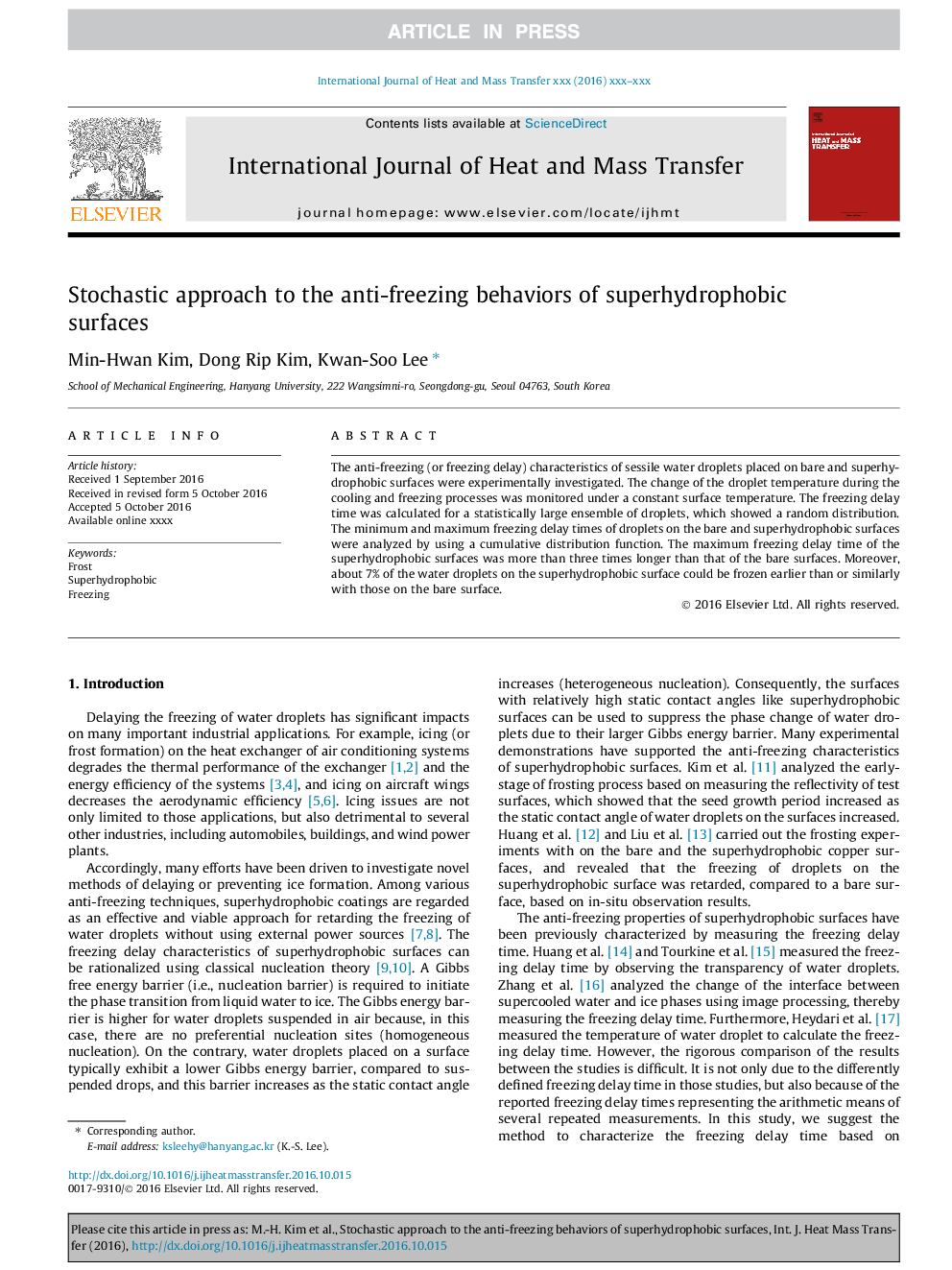| Article ID | Journal | Published Year | Pages | File Type |
|---|---|---|---|---|
| 4994812 | International Journal of Heat and Mass Transfer | 2017 | 6 Pages |
Abstract
The anti-freezing (or freezing delay) characteristics of sessile water droplets placed on bare and superhydrophobic surfaces were experimentally investigated. The change of the droplet temperature during the cooling and freezing processes was monitored under a constant surface temperature. The freezing delay time was calculated for a statistically large ensemble of droplets, which showed a random distribution. The minimum and maximum freezing delay times of droplets on the bare and superhydrophobic surfaces were analyzed by using a cumulative distribution function. The maximum freezing delay time of the superhydrophobic surfaces was more than three times longer than that of the bare surfaces. Moreover, about 7% of the water droplets on the superhydrophobic surface could be frozen earlier than or similarly with those on the bare surface.
Keywords
Related Topics
Physical Sciences and Engineering
Chemical Engineering
Fluid Flow and Transfer Processes
Authors
Min-Hwan Kim, Dong Rip Kim, Kwan-Soo Lee,
